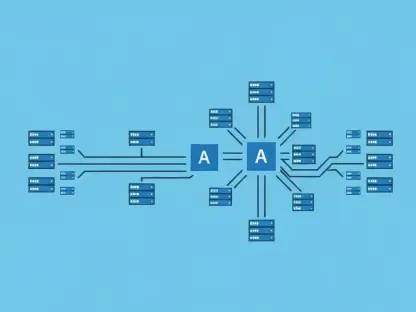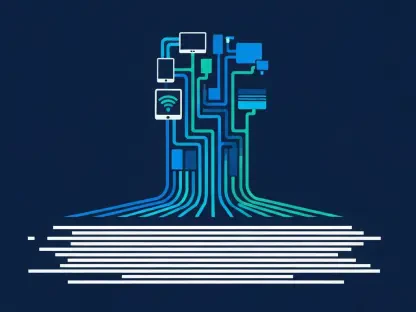Imagine a scenario where a trusted website, visited daily by millions, suddenly becomes a gateway for cybercriminals to intercept sensitive data through a man-in-the-middle attack, all due to a single misissued digital certificate that undermines trust in the entire online ecosystem. With cyber threats escalating at an alarming rate, Certificate Transparency (CT) has emerged as a vital safeguard, ensuring accountability in the issuance of digital certificates. This trend analysis explores the evolution of CT as a cornerstone of digital security, delving into its widespread adoption, real-world impact, expert perspectives, and future potential. The journey through these facets reveals how transparency is reshaping trust in the digital landscape.
The Rise of Certificate Transparency: A Security Paradigm Shift
Adoption and Growth Metrics
Since its inception by Google over a decade ago, Certificate Transparency has seen remarkable growth in adoption, becoming a non-negotiable standard in the realm of digital security. Public CT logs, which record every issued certificate for scrutiny, have amassed billions of entries, reflecting robust uptake by Certificate Authorities (CAs) worldwide. Industry reports from the CA/Browser Forum indicate that major browsers like Chrome and Firefox now mandate CT logging for all publicly trusted certificates, a policy that has driven compliance across the board.
The trajectory of CT log entries showcases an exponential increase, with data suggesting that the volume of logged certificates has surged significantly in recent years. This trend underscores the commitment of domain owners and CAs to transparency as a means of bolstering trust. As of the current year, projections estimate continued growth, highlighting CT’s entrenched role in the Public Key Infrastructure (PKI) ecosystem.
This widespread acceptance is further evidenced by browser policies that enforce strict adherence to CT requirements. Non-compliance can result in certificates being flagged as untrusted, pushing even smaller CAs to integrate logging mechanisms. Such mandates have created a ripple effect, ensuring that transparency is no longer optional but a fundamental aspect of digital security protocols.
Real-World Implementation Examples
The practical impact of Certificate Transparency is evident in its ability to detect and mitigate security risks in high-stakes environments. A notable instance involved the identification of misissued certificates for a prominent global website, where CT logs enabled rapid detection and revocation before any harm could occur. This case highlighted how public visibility into certificate issuance can prevent potential breaches.
Another compelling example is the integration of CT by Let’s Encrypt, a leading provider of free digital certificates. By making logging a default feature, Let’s Encrypt ensures that millions of websites benefit from enhanced accountability without additional effort. This seamless adoption demonstrates how CT can scale across diverse user bases, fortifying trust on a massive scale.
Google’s enforcement of CT within Chrome further illustrates its real-world significance. By refusing to trust certificates that lack public log entries, Chrome has set a precedent that compels CAs to comply or risk losing credibility. Such browser-driven initiatives have thwarted numerous attempts at issuing fraudulent certificates, reinforcing the practical value of transparency in safeguarding digital interactions.
Expert Perspectives on Certificate Transparency
The significance of Certificate Transparency in modern digital security garners strong support from a range of industry stakeholders. Cybersecurity specialists emphasize that CT acts as a critical check against fraudulent certificate issuance, enabling domain owners to monitor for unauthorized activity. Their view is that without such transparency, the risk of undetected man-in-the-middle attacks would be substantially higher.
Browser developers, instrumental in enforcing CT mandates, argue that public logging is essential for maintaining user trust in the internet ecosystem. Representatives from major browsers note that while challenges like log management exist, the benefits of early detection of misissuance far outweigh operational hurdles. This perspective underscores the pivotal role of browsers as gatekeepers of digital trust.
On the other hand, some Certificate Authority representatives point to the complexities of balancing transparency with privacy concerns. Smaller CAs, in particular, face resource constraints in complying with logging requirements, raising questions about equitable implementation. Despite these challenges, there is broad consensus among experts that CT is shaping the future of security standards, paving the way for more robust safeguards in the PKI framework.
The Future of Certificate Transparency: Opportunities and Challenges
Looking ahead, Certificate Transparency stands poised for significant advancements that could further enhance its effectiveness. Innovations such as static CT logs, exemplified by projects like Let’s Encrypt’s Sunlight initiative, aim to improve scalability by reducing the dynamic overhead of log management. Such developments promise to make transparency more accessible, even as the volume of digital certificates continues to grow.
Emerging technologies like blockchain also present intriguing possibilities for CT, offering a decentralized approach to trust verification. While still in exploratory stages, integrating blockchain could enhance the detection of unauthorized certificates by distributing log data across a tamper-resistant network. However, scalability remains a concern, as managing massive datasets in a decentralized framework poses technical hurdles yet to be fully addressed.
The broader implications of CT extend to preparing for future cyber threats, including risks posed by quantum computing. As industries like finance and healthcare increasingly rely on secure communications, CT’s role in maintaining trust becomes even more critical. Addressing these challenges will require ongoing collaboration among stakeholders to refine transparency mechanisms, ensuring they remain resilient against evolving dangers in the digital realm.
Conclusion: Embracing Transparency for a Secure Digital Future
Reflecting on the journey of Certificate Transparency, its rapid adoption and tangible impact stand out as a testament to its value in digital security. Experts across the field endorse its role in preventing fraud, while real-world applications demonstrate its power to avert crises. The path forward demands innovative solutions to scalability and privacy concerns, as explored through projects and emerging technologies.
A critical next step is for businesses, developers, and policymakers to collaborate on refining CT frameworks, ensuring they adapt to new threats like quantum risks. Investing in education and tools for monitoring logs also emerges as essential, empowering all stakeholders to contribute to a safer internet. These actions, taken collectively, promise to solidify transparency as the bedrock of trust in an ever-changing digital landscape.









